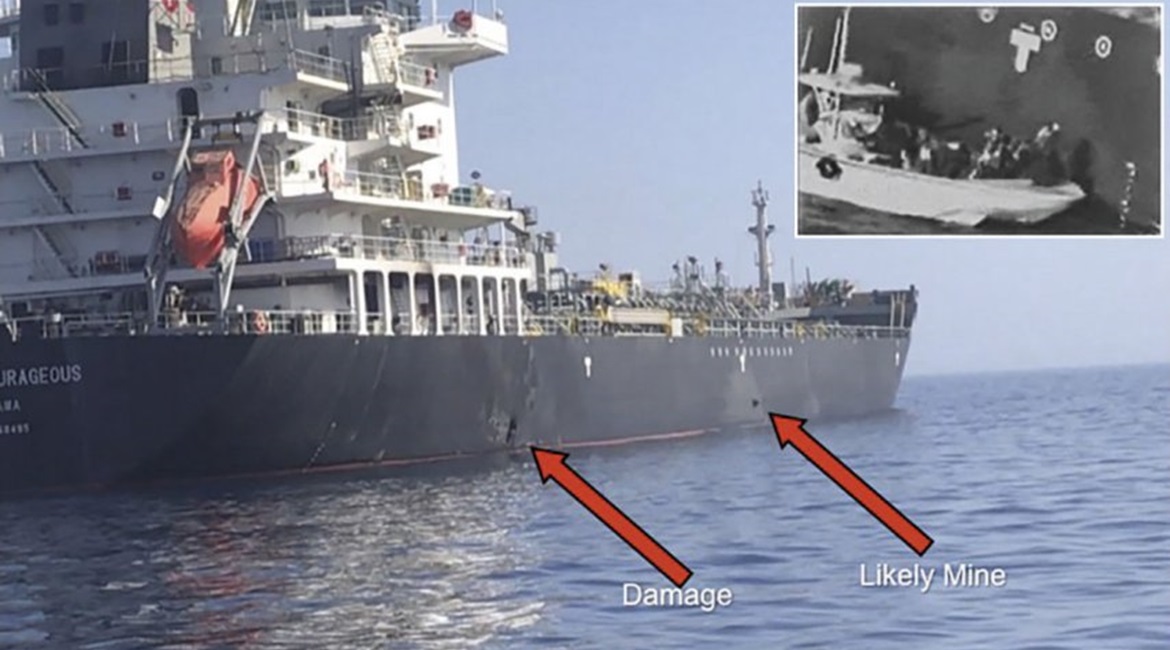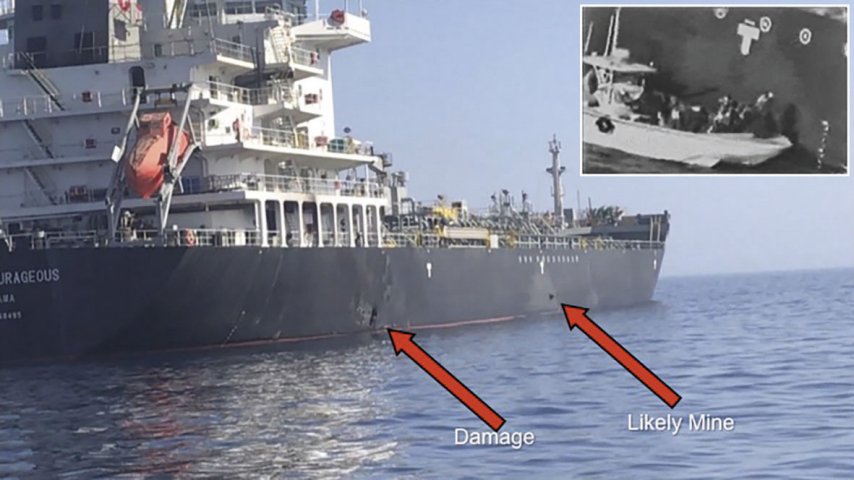
The Trump administration has directly blamed Iran for attacking two more oil tankers in the Gulf of Oman with limpet mines as part of a wider response to economic sanctions.

A photograph released by the US Navy shows the suspected limpet mine attached to Kokuka Courageous . A still (inset) from the footage released by CENTCOM shows an Iranian-type FIAC in a location that enabled its crew to recover the object. (US Navy/US Central Command)
Having transited the Strait of Hormuz, the two tankers were near each other when they were hit by explosions on their starboard sides early on 13 June. No one was injured, but Front Altair was seriously damaged and set on fire, while Kokuka Courageous suffered less damage.
“It is the assessment of the United States government that the Islamic Republic of Iran was responsible for the attacks that occurred in the Gulf of Oman today,” Secretary of State Mike Pompeo said. “This assessment is based on intelligence, the weapons used, the level of expertise needed to execute the operation, recent Iranian attacks on shipping, and the fact that no proxy group operating in the area has the resources and proficiency to act with such a high-degree of sophistication.”
Meanwhile, US Central Command (CENTCOM) released aerial surveillance footage that it said showed Islamic Revolution Guards Corps (IRGC) personnel on a Ghashti-class fast inshore attack craft (FIAC) removing an unexploded limpet mine from Kokuka Courageous .
A photograph released by the US Navy showed Kokuka Courageous with an object attached in the same location on its starboard side, as well as damage to another part of its hull.
CENTCOM said the crew from Front Altair
Looking to read the full article?
Gain unlimited access to Janes news and more...




